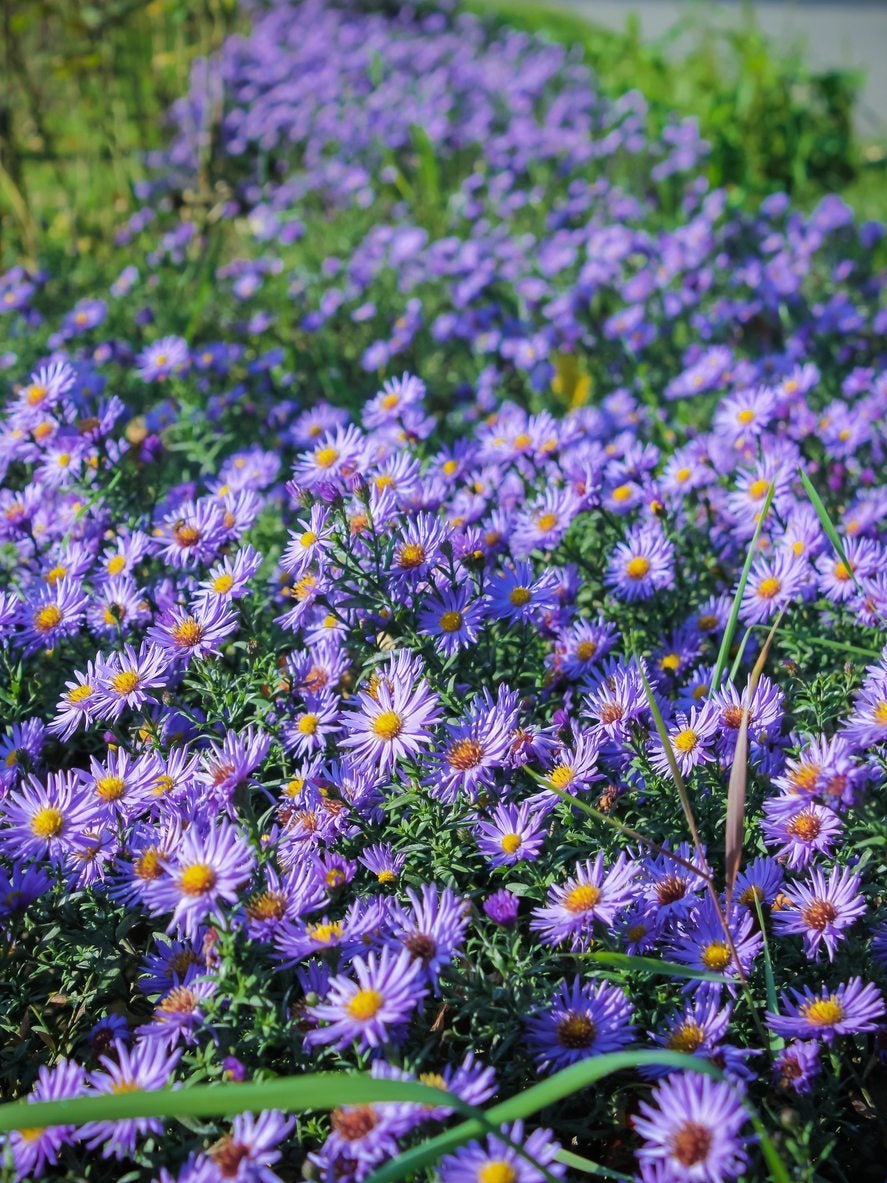How To Divide Asters : Tips For Spitting Aster Plants In The Garden


Autumn wouldn't be the same without the rich tones of aster plants. These fall perennial darlings grow vigorously into small, stout bushes decorated with many daisy-like flowers. Over time, asters can become leggy and flower production will minimize. This is normal but can be corrected by splitting aster plants. Dividing asters will help create a more dense plant with sturdier stems and a full crown of blooms. Read on to learn how to divide aster and what time of year it is appropriate to do so.
When to Divide Aster
Like many perennials, asters benefit from division. One of the things division does is stimulate new roots that will form new shoots. The new growth fills in areas that were becoming sparse, a common complaint in asters that have not been separated. You will need to be careful about when to divide asters, as doing so in the wrong season can affect flower production. Whether you have New England or New York varieties, asters have a long bloom period and lovely, lacy notched foliage. They brighten up fall, when most other blooming plants have ceased to flower. Asters are long lived in pots or in ground, but after two to three years, you may notice the centers dying out and the stems flopping. This means it is time to divide Aster. Separating asters is best done in early spring. The plant will just be leaving its winter dormancy and new shoots form but no buds will be evident yet. Dividing aster plants in spring will allow the new plants time to establish and even bloom before the end of summer without sacrificing flowers or any new growth.
How to Divide Asters
Perennial division is relatively straightforward. With asters, the root mass spreads so you will be planting the outer growth and discarding the old center roots. Dig around the root base of your aster and down under it carefully to remove the root ball. Use a sharp soil saw or edge of a shovel for splitting asters. It is important the implement be sharp to avoid damaging the roots as you cut the mass apart. Depending on the size of the plant, either divide into two pieces or three if the plant is established and has not been divided in a while. Take the edges of the root mass, not the center, which has pretty much done its work. Make sure each piece has plenty of healthy root and stems. Then it is time to plant.
What to Do After Separating Asters
Aster plants that have been divided develop into new bushes, which means the process actually gives you free plants. Once each piece has been inspected for disease or pest problems, it is time to plant. You may either pot up the divisions or put them into the ground. The soil should be well draining, preferably in an area with at least six hours of sun. Once the roots have been buried to the level at which they were previously growing, water well to settle the soil. Plants should grow just as the parent did, and will need to be fed in early spring with an organic product. It is a good idea to mulch around the new plants to protect them during winter and prevent competitive weed growth. Your new plants will usually bloom the first year, doubling or even tripling your original investment.
Sign up for the Gardening Know How newsletter today and receive a free copy of our e-book "How to Grow Delicious Tomatoes".

Bonnie Grant is a professional landscaper with a Certification in Urban Gardening. She has been gardening and writing for 15 years. A former professional chef, she has a passion for edible landscaping.